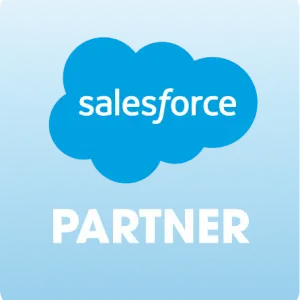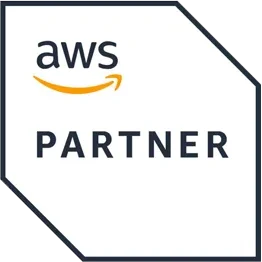 These days, embedded systems can be found everywhere: in appliances, most modern modes of transportation, even lifesaving medical devices. There is software embedded in everything from toys and smartphones to airplanes. In a matter of just a few decades, software with embedded system licensing has been integrated into every aspect of our daily life.
These days, embedded systems can be found everywhere: in appliances, most modern modes of transportation, even lifesaving medical devices. There is software embedded in everything from toys and smartphones to airplanes. In a matter of just a few decades, software with embedded system licensing has been integrated into every aspect of our daily life.
Often embedded software is responsible for a product's most essential, defining functions. For example, embedded software is what allows a smartwatch to track your heart rate and use your GPS location. As embedded software becomes more common, embedded software creators must know how to best manage and protect their products with embedded software licensing.
What is Embedded Software?
Embedded software is the combination of software and hardware into a single package by manufacturers. It's computer software created specifically for machines that we don't usually think of as computers, but that do use software to function. For example, both the core function of a pacemaker and the security measures that keep the medical information private are products of the pacemaker's embedded software. How your embedded licensing and management is set up can affect the experience of your users, almost as much as the product itself.
What is Embedded Software Licensing?
So what is embedded licensing? Embedded software licensing defines the legal restrictions under which consumers use your product. Embedded software licensing models can be divided into two categories: proprietary and open-source. Within open-source, the four types of software licenses are permissive, public domain, LGPL, and copyleft. Each of these licenses comes with unique freedoms and regulations, even for embedded licensing. Open-source licenses allow you to reuse code to some degree, as long as you comply with the corresponding publishing obligations. Open-source is at the most permissive end of the spectrum, with proprietary licenses at the other end. Unlike open-source, software with proprietary embedded licensing cannot be changed or distributed without express permission from the software owner in the embedded software license agreement.
Most companies choose proprietary licensing for their embedded systems as it best allows them to control, protect, and manage their product.
Managing Your Proprietary License
While you may have encountered various kinds of open-source licenses when creating your embedded system, presumably you are licensing your software under a proprietary embedded license. Even when choosing only between proprietary license models, your choices about embedded system licensing can strongly affect user experience and your ability to continue developing your embedded software after it is released to the public. The embedded software license agreement can influence everything from how you collect data to how you provide updates and bill your users. Each embedded system licensing model comes with its own set of advantages and disadvantages. It is important to understand the differences as you plan your monetization strategy and figure out how to maximize your software's potential.
Embedded Software Licensing Models
As a creator of embedded software, one of the first considerations is how users purchase and receive your product, in other words: how does the embedded software work? The way you structure your embedded software license agreement must depend on how users purchase a product and how they use it over time.
Perpetual:
Software bought with perpetual embedded system licensing is purchased once. For customers, this is convenient and easy to understand. The hardware product is theirs forever and so is the software that goes with it. Under perpetual embedded system licensing, you’re not expected to provide updates or support to your embedded software, but that also means you can't collect data from your users or improve your user experience. If your customers want the newest version of your embedded software, they are forced to purchase a completely new product. This license can make a lot of sense for types of embedded software that users wouldn’t regularly get updated, like a smart fridge.
 Subscription:
Subscription:
In a subscription model, customers pay on an ongoing basis (typically monthly or yearly). This allows you to regularly update your software and offer your users a helpful support system. Subscription licensing is growing in popularity over all software categories, but it presents some unique challenges when it comes to managing embedded software licenses.
User-Based:
Even software embedded in an individual device can support multiple user accounts, making it possible to price according to the number of users. This can be great for developers because you will be compensated more for any additional users you are expected to support. But it's also good for your users, allowing small companies to pay less than larger ones. It's also appealing when users want to track different accounts or employees individually. For example, a multiple-user platform could allow a retail company to track multiple salespeople on a single point of sale device (cash register, monitor, etc.) and pay commissions accordingly. However, user-based licensing is rare for embedded software. Because you can usually only have one person using the device at a time anyway, there may not be a lot of reason for a customer to have multiple user accounts, and user-based payment becomes hard to enforce.
Feature-Based and Freemium:
One of the biggest advantages of embedded software is the ability to customize features without adjusting any hardware. Feature-based licensing allows you to offer customized products and only charge customers for the features they use. A similar option is the freemium model (a combination of “free” and “premium”). It's very similar to feature-based licensing models but keeps basic services free, only charging for the software when users start taking advantage of more advanced services.
Enforcing and Tracking Software Licenses
All of this work on the part of the developer, both creating and licensing their product, is wasted if the license and embedded software isn’t monitored and protected. That's where licensing comes in and where you have to ask: what is embedded software licensing? The three most common methods for deploying embedded software licensing are via hardware, software, or through the cloud. Each of these embedded software licensing models comes with its own advantages and disadvantages so it's important to consider what works best for your embedded software specifically.
Hardware:
An embedded license system enforced through hardware uses a physical object (usually a USB drive) as a passcode into the system. This means the software will only work if the dongle is plugged into the computer. Once plugged in the dongle can even manage certain permissions and features. One of the advantages of using hardware to enforce your license is the added protection it offers compared to a cloud-based system, especially as it doesn’t require an internet connection to implement. Transferring the license involves moving a chip or USB into a new device. This type of management makes more sense for certain products than others. For example, a car that uses embedded software managed by hardware would require the driver to come in to update their system. However, this kind of system can make a lot of sense for companies with high security or unreliable internet access.
Software:
 Another option is to embed all licensing control into the software itself. The device would come with the software already installed, and therefore would require no internet connection or separate hardware. You can update the software through a file-sharing system, but still have no way to collect user data or automatically update the software.
Another option is to embed all licensing control into the software itself. The device would come with the software already installed, and therefore would require no internet connection or separate hardware. You can update the software through a file-sharing system, but still have no way to collect user data or automatically update the software.
The Cloud:
Connection to the internet allows for immediate updates as well as on-the-spot systems checks. This allows you as the vendor to oversee and enforce licensing in real-time. You can also use it to collect the most up-to-date information on data and usage - critical information for continuing to develop your embedded software. Choosing the right security management is critical for a cloud-based system. However, this method assumes that every device has a strong internet connection, which is impossible in settings without, or with restricted, connectivity.
Getting Started with Embedded Software Licensing Management
Now you know the first basic factors to consider when getting started with your embedded software licensing and management. Protecting your software and managing it in a way that works best for you is a critical step in monetizing and helping your product reach its full potential. Visit Thales to learn more about the tools to best protect your product and reputation.

Effective Embedded Software Licensing Models for High Tech Manufacturers - White Paper
4 Steps to an Effective Embedded Software Monetization Strategy The introduction of software into the hardware manufacturer’s business presents many challenges and is forcing operational changes for which some device manufacturers are not prepared. However, some embedded...

Increase Efficiency Flexible Licensing in Embedded Devices - psmtec Case Study
Increase Efficiency and Flexibility in Embedded Devices like psmtec - Case Study psmtec is a gaming machine and software developer, with a focus on developing, producing, and distributing innovative, premium gaming for casinos and arcades. With their motto “Personal –Target...

Grow Your Revenue Using an Embedded Software Licensing Strategy - White Paper
Just What the Doctor Ordered: How to Grow Your Medical Device Revenue Through Software Licensing To fully monetize their IP by increasing revenue and reducing costs, medical device vendors need a software monetization strategy that hinges on four distinct considerations...



